Overwatch 2, developed by Blizzard Entertainment, offers diverse game modes and seasonal events that keep the gameplay fresh and engaging. Core modes like Push, Escort, Hybrid, Control, and others provide unique strategic challenges.
Seasonal events such as Halloween Terror, Winter Wonderland, Lunar New Year, Archives, and Summer Games introduce themed content and exclusive game modes, celebrating different times of the year and delving into the game’s lore. Custom Games and the Workshop mode allow for player creativity, while competitive ranked play provides a structured environment for serious gamers. These elements together ensure a dynamic and evolving experience in Overwatch 2.
Here’s a detailed overview of the various modes in Overwatch 2:
Game Modes:
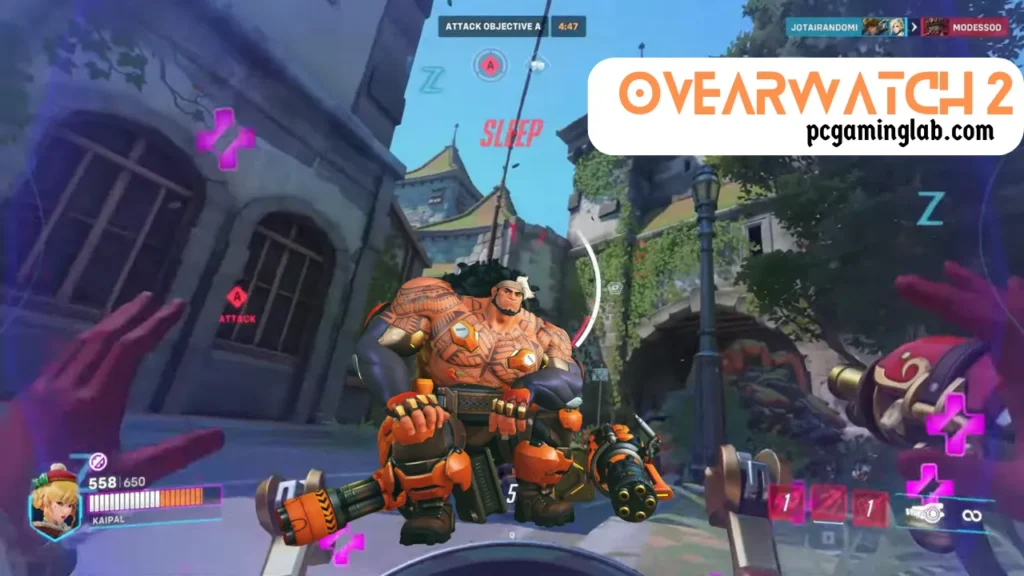
Push:
Description: Push is a new core game mode where teams compete to take control of a robot in the center of the map and push it toward the enemy base. The team that pushes the robot the farthest by the end of the match wins.
Gameplay Mechanics:
- Control Points: The robot starts at a neutral position, and teams must battle to gain control. Once a team takes control, the robot starts pushing the barricade towards the enemy base.
- Switching Control: If the opposing team gains control, the robot stops and begins pushing the barricade back toward the initial team’s base.
- Overtime: If the match timer expires while the robot is in control of one team, overtime is triggered, giving that team a chance to push the robot further.
Maps:
- Toronto: Set in a futuristic version of the Canadian city, this map features urban environments, combining narrow streets and open areas for varied combat scenarios. Its symmetrical design ensures balanced gameplay for both teams.
- Rome: This map is inspired by the historical and architectural beauty of Rome. Players navigate through ancient ruins and modern structures, creating a diverse battlefield. Like Toronto, Rome’s symmetrical layout ensures fairness and strategic depth, with numerous choke points and flanking routes.
Strategic Elements:
- Team Coordination: Success in Push relies heavily on team coordination. Players need to balance attacking, defending the robot, and maintaining map control.
- Hero Composition: Choosing the right heroes to either push the barricade quickly or defend against the enemy’s advances is crucial. Mobility, crowd control, and sustained damage are key factors.
- Map Awareness: Knowing the layout of the map, including shortcuts and high-ground positions, can provide a strategic advantage.
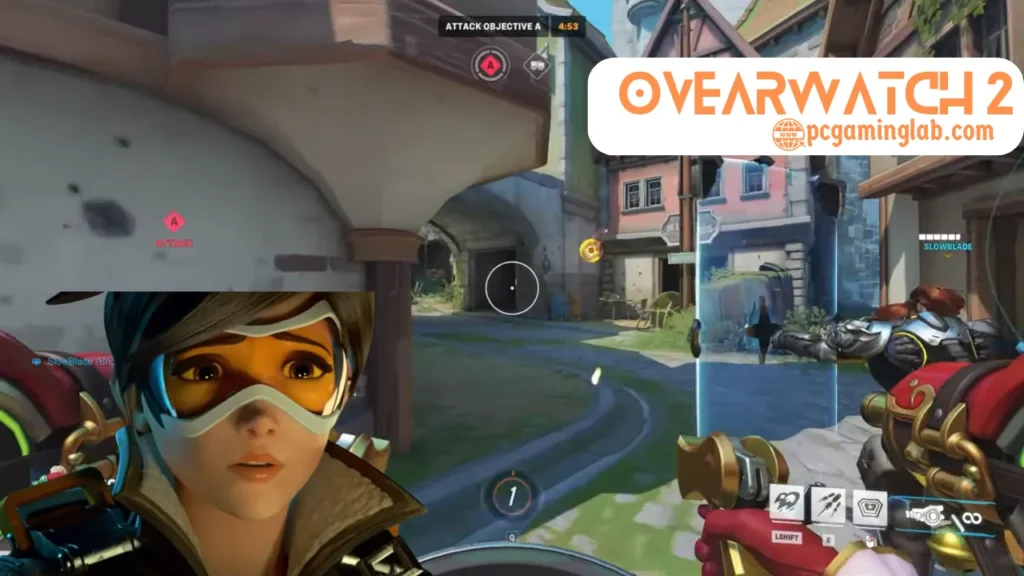
Escort:
Description: In Escort, the attacking team must deliver a payload to a delivery point, while the defending team tries to stop them.
Gameplay Mechanics:
- Payload Movement: The payload advances when attackers are near it. The more attackers present, the faster it moves. If defenders contest by being near the payload, it stops moving.
- Checkpoints: Maps are divided into segments with checkpoints. Reaching a checkpoint grants additional time and changes the spawn points for both teams.
- Overtime: If the match timer runs out while attackers are near the payload, overtime is triggered, extending the game until defenders can clear the area.
Maps:
- Route 66: Set in the American Southwest, Route 66 features a mix of open spaces and narrow corridors, providing a variety of engagement distances. Attackers start in a diner and must escort the payload through a gas station, under a highway, and into a final loading dock area.
- Watchpoint: Gibraltar: Located in a high-tech space launch facility, this map includes indoor and outdoor sections with significant verticality. Attackers start on a dock and move through a control center and high-tech facilities before reaching the final checkpoint.
- Circuit Royal: A new map in Overwatch 2, Circuit Royal is set in a luxurious, urban environment. It features intricate layouts with winding streets, luxurious buildings, and varied elevation, providing multiple vantage points and strategic positions.
Strategic Elements:
- Team Coordination: Effective communication and coordination are vital. Attackers need to move as a unit to protect the payload, while defenders must coordinate their efforts to delay and disrupt the payload’s progress.
- Hero Composition: Selecting the right mix of heroes is crucial. Attackers often benefit from heroes with high mobility and sustain, while defenders can leverage heroes with area denial and crowd control abilities.
- Map Control: Understanding the map layout, including high ground positions and choke points, can provide significant tactical advantages. Control of these areas can dictate the flow of the game.
Key Strategies:
- For Attackers:
- Escort and Protect: Always keep at least one player near the payload to ensure it keeps moving.
- Flanking: Use heroes that can flank and disrupt the defending team’s positions.
- Ultimate Management: Coordinate ultimate abilities to break through strong defensive setups.
- For Defenders:
- Choke Points: Utilize narrow passages to create strong defensive holds.
- High Ground: Maintain control of elevated positions for better sightlines and defensive advantage.
- Staggering: Eliminate attackers in a staggered manner to delay their regrouping and push.

Hybrid:
Description: Hybrid maps combine Assault and Escort elements. The attacking team captures a point, turning it into a payload delivery mission. Hybrid:
Gameplay Mechanics:
- Initial Assault Phase: The attacking team must capture a control point, similar to the Assault mode. Success in this phase requires coordinated attacks and effective use of hero abilities to overwhelm the defenders.
- Payload Escort Phase: Once the control point is captured, the game transitions to an Escort mission. The payload appears, and the attackers must push it through the map’s various checkpoints to the final delivery point.
- Checkpoints and Spawn Points: Capturing the initial point and reaching payload checkpoints grant additional time and change spawn points for both teams, providing strategic depth and resetting defensive setups.
- Overtime: If the match timer expires while attackers are near the control point or payload, overtime is triggered, extending the game until the defenders can clear the area.
Maps:
- King’s Row: Set in a dystopian London, King’s Row begins with attackers capturing a power station. Once captured, the payload must be escorted through winding streets and past key landmarks to deliver it to a secure facility.
- Eichenwalde: Located in a German village, attackers first capture a castle entrance. The payload then becomes a battering ram that must be escorted through the village, over a drawbridge, and into the castle’s inner sanctum.
- Blizzard World: A theme park map that features iconic areas from Blizzard’s games. Attackers capture the entrance to the park and then escort the payload through different themed areas, such as a Diablo-inspired section and a StarCraft zone.
Strategic Elements:
- Team Coordination: Hybrid maps require teams to be versatile and coordinate effectively as the objectives change. A strong assault strategy is needed initially, followed by a robust escort plan.
- Hero Composition: Teams may need to adjust their hero picks after the initial capture phase to better suit the payload escort phase. Flexibility in hero roles can provide a significant advantage.
- Map Control: Mastery of both point capture tactics and payload escort strategies is essential. Knowing key choke points, defensive positions, and high-ground areas can dictate the flow of the game.
Key Strategies:
- For Attackers:
- Point Capture: Use heroes with strong area denial and burst damage to quickly capture the point. Coordination and timing are crucial to break through defenses.
- Payload Escort: Transition to heroes that can sustain prolonged engagements and protect the payload. Utilize flanking routes to disrupt defensive setups.
- Ultimate Management: Save and coordinate ultimate abilities for crucial moments, especially during point capture and payload pushes.
- For Defenders:
- Initial Defense: Set up strong defenses at the control point with heroes that excel in holding positions and providing area denial.
- Payload Defense: Once the point is captured, fall back to predefined defensive positions along the payload route. Control high ground and choke points to stall the payload’s progress.
- Staggering: Aim to eliminate attackers in a staggered fashion to delay their regrouping efforts and buy time.
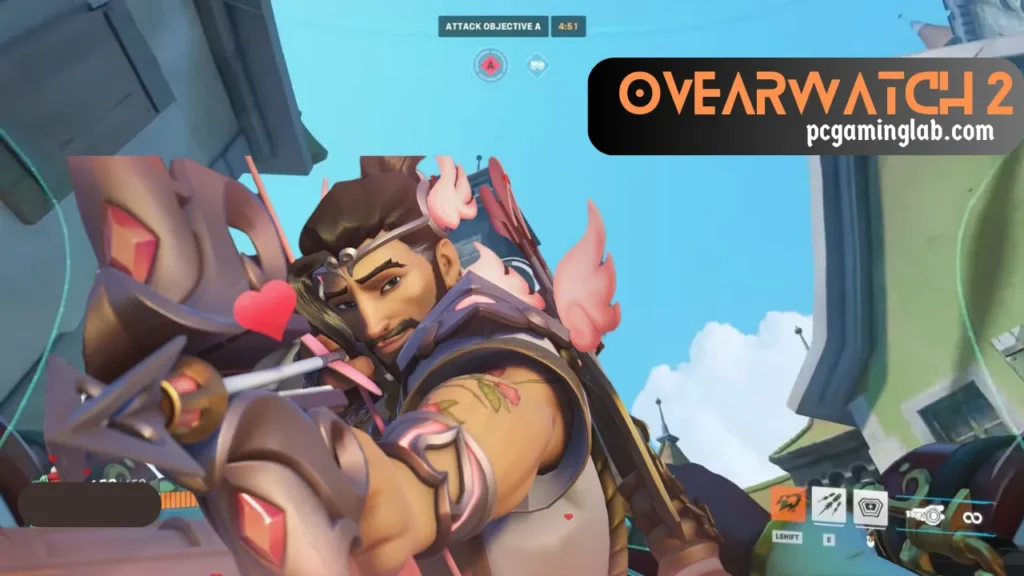
Control:
Description: Teams fight to control a central point. The first team to win two rounds wins the match.
Gameplay Mechanics:
- Objective Capture: Once the round begins, teams race to the central control point. The point unlocks after a short delay, and teams must stand within its radius to capture it.
- Holding the Point: Once a team captures the point, they need to maintain control by preventing the opposing team from contesting it. The capture progress only increases when uncontested.
- Overtime: If the match timer expires while both teams are contesting the point or if one team is close to capturing it, overtime is triggered. The round continues until one team secures the point uncontested.
Maps: Control maps are divided into three distinct sub-maps, each with unique layouts and strategic elements. Teams play on a different sub-map each round, and the first team to win two rounds wins the match.
- Lijiang Tower: Set in a bustling Chinese metropolis, Lijiang Tower features diverse sub-maps:
- Control Center: An indoor map with tight corridors and elevated platforms, focusing on close-quarters combat.
- Night Market: An outdoor market area with various flanking routes and open spaces for long-range engagements.
- Garden: A scenic garden with a central pagoda, offering opportunities for vertical play and environmental hazards.
- Ilios: Located on a picturesque Greek island, Ilios offers a variety of terrain and strategic positions:
- Lighthouse: Features a central control point near a lighthouse, with open areas and opportunities for environmental kills.
- Well: Set around a deep well in the center of the map, with many opportunities to knock opponents into the pit.
- Ruins: An ancient temple area with high vantage points and open spaces for team fights.
- Nepal: Set in the Himalayan mountains, Nepal’s sub-maps blend indoor and outdoor environments:
- Sanctum: Features a control point inside a temple, with narrow corridors and a large pitfall hazard.
- Village: A snowy village with enclosed buildings and tight spaces, promoting close-quarters combat.
- Shrine: An open area with a central shrine, providing opportunities for long-range engagements and flanking.
Strategic Elements:
- Team Coordination: Effective communication and teamwork are essential in Control. Teams must coordinate their movements, attacks, and defenses to secure and maintain control of the point.
- Hero Composition: Choosing the right heroes for each sub-map is crucial. Mobility, area control, and sustain are key factors in maintaining control of the objective.
- Map Knowledge: Understanding the layout of each sub-map, including key choke points, flanking routes, and high ground positions, can provide a strategic advantage.
Key Strategies:
- For Both Teams:
- Initial Engagement: Rush to the central point as a coordinated unit to secure early control. Use speed-boosting abilities to reach the point quickly.
- Point Control: Once captured, set up defensive positions around the point. Utilize heroes with area denial abilities to hold the point and prevent enemy advances.
- Ultimate Management: Save and coordinate ultimate abilities for key moments to secure or retake the point. Timing and synergy are crucial for successful engagements.
- For Attackers:
- Flanking and Disruption: Use heroes that can flank and disrupt the enemy’s defensive setup. Target key enemy players, such as healers, to weaken their defense.
- Split Push: If the enemy team is heavily entrenched, consider splitting your team to attack from multiple angles simultaneously, creating pressure and confusion.
- For Defenders:
- Hold Choke Points: Set up strong defensive positions at choke points leading to the control point. Use tanks and area denial heroes to prevent enemy advances.
- Environmental Kills: On maps with environmental hazards, use abilities to knock enemies into pits or off ledges to secure easy eliminations.

Assault (formerly 2CP – Two Control Points):
Description: The attacking team captures two sequential points, while the defending team tries to prevent this.
Gameplay Mechanics:
- Initial Capture Phase: The attacking team must capture Point A to proceed. Defenders set up strongholds to prevent the capture.
- Sequential Capture: Upon capturing Point A, the attacking team gains additional time and moves to capture Point B. Defenders then shift to protect Point B.
- Capture Progress: Both points have capture progress bars divided into three segments. The more attackers present on the point, the faster it captures. If defenders contest the point, the capture progress halts.
- Overtime: If the match timer runs out while attackers are contesting a point, overtime is triggered, extending the game until defenders can clear the point.
Maps:
- Hanamura: A Japanese-themed map featuring a traditional castle and courtyard. Attackers must first capture a point located outside a gate and then move inside the castle to capture the second point.
- Volskaya Industries: Set in a Russian industrial complex, attackers initially capture a point within a factory yard and then proceed to capture a point inside a high-tech manufacturing facility.
- Temple of Anubis: Located in an Egyptian archaeological site, attackers first capture a point in an outdoor area before moving into an ancient temple to capture the second point.
Strategic Elements:
- Team Coordination: Effective teamwork and communication are essential for both attacking and defending teams. Coordinated pushes and defensive holds are key to success.
- Hero Composition: Selecting the right heroes for each phase is crucial. Attackers may benefit from heroes with strong initiation and sustain, while defenders might prefer heroes with area control and durability.
- Map Knowledge: Understanding the layout of each map, including choke points, flanking routes, and defensive positions, can provide significant strategic advantages.
Key Strategies:
- For Attackers:
- Coordinated Pushes: Group up and initiate coordinated pushes to overwhelm defenders. Use abilities to create openings and disrupt enemy defenses.
- Flanking and Diversion: Use heroes that can flank and create diversions to split the defenders’ focus and open up capture opportunities.
- Ultimate Management: Save and coordinate ultimate abilities for crucial moments to break through strong defensive setups.
- For Defenders:
- Choke Point Control: Set up strong defenses at key choke points to delay attackers and create kill zones.
- Layered Defenses: Utilize multiple layers of defense, falling back to secondary positions if the first point is lost, to create a staggered defense for Point B.
- Ultimate Economy: Manage ultimate abilities carefully, using them to repel large attacks and maintain control of capture points.
Historical Context and Changes:
- Popularity and Criticism: While Assault maps were popular for their strategic depth and challenging gameplay, they also faced criticism for potential stalemates and frustration due to prolonged defensive holds.
- Rotation Changes: Due to community feedback and balance considerations, Blizzard removed the Assault mode from competitive and quick play rotations in Overwatch 2. However, it remains available in custom games, allowing players to create and enjoy 2CP scenarios if desired.

Capture the Flag:
Description: Teams attempt to capture the enemy’s flag and return it to their base while defending their own flag.
Gameplay Mechanics:
- Flag Capture: To capture the flag, a player must reach the enemy base, pick up the flag, and return it to their own base without being eliminated. If the flag carrier is killed, the flag is dropped and can be picked up by teammates or reset by the enemy team.
- Flag Defense: Teams must defend their flag by preventing the enemy from reaching it and capturing it. Effective defense strategies include positioning heroes with crowd control abilities and maintaining map awareness.
- Scoring: A point is scored each time a team successfully captures the enemy flag and returns it to their base. The match typically has a time limit, and the team with the most captures at the end of the match wins. If the game is tied, sudden death rules may apply.
- Flag Interactions: Certain abilities can affect flag interactions. For example, movement abilities that allow for teleportation or increased speed may have restrictions when carrying the flag to ensure balanced gameplay.
Maps: Capture the Flag maps are variations of existing maps, specifically tailored to suit the mechanics of the game mode. These maps include modified layouts to facilitate balanced gameplay for both offense and defense.
- Lijiang Tower: Garden: This version of Lijiang Tower features two bases at opposite ends of the map. The garden area provides open spaces and flanking routes, making mobility and positioning crucial for both capturing and defending.
- Oasis: University: Set in a university campus, this map has bases located at either end of the central courtyard. The map’s design includes multiple entry points and high ground areas, allowing for varied strategies.
- Ilios: Ruins: In this version of Ilios, the ruins provide numerous hiding spots and elevated positions. Teams must navigate through the ruins to reach the enemy flag, using the terrain to their advantage.
Strategic Elements:
- Team Composition: Choosing the right heroes for Capture the Flag is vital. Mobile heroes who can quickly traverse the map and defensive heroes who can protect the flag are essential.
- Offensive Strategies: Coordinated attacks and flanking maneuvers can disrupt enemy defenses. Heroes with abilities that can quickly disengage or escape are valuable for flag captures.
- Defensive Tactics: Setting up strong defenses around the flag with heroes that have crowd control, area denial, or high sustain can deter enemy captures. Maintaining constant surveillance and communication is key.
Key Strategies:
- For Attackers:
- Mobility and Speed: Use heroes with high mobility to quickly reach the enemy flag and escape before the defense can react.
- Distraction and Diversion: Create distractions or diversions to draw defenders away from the flag. Use multiple attackers to split the enemy’s focus.
- Team Coordination: Work together to support the flag carrier, providing healing and protection while they return the flag to base.
- For Defenders:
- Zone Control: Establish control zones around the flag with heroes that can provide area denial and crowd control. Place traps and turrets strategically.
- Communication: Maintain constant communication with the team to relay enemy positions and movements. Respond quickly to threats and coordinate defense.
- Fallback Strategies: Have contingency plans for when the flag is taken, such as designated heroes to intercept and retrieve the flag from the enemy.
Special Events and Variations:
- Seasonal Events: Capture the Flag is often featured in seasonal events like Lunar New Year, with thematic changes and special map decorations to celebrate the occasion.
- Competitive Capture the Flag: Occasionally, Blizzard introduces a competitive CTF mode with ranking and competitive rewards, adding an extra layer of intensity to the game mode.

Deathmatch:
Gameplay Variations:
- Free-For-All:
- Description: In this mode, it’s every player for themselves. The objective is to be the first player to reach a predetermined number of kills. There are no teams, and everyone is an enemy. Players respawn after being eliminated, keeping the action continuous.
- Scoring: The first player to reach the kill target wins the match. Typically, this target is set to 20 kills.
- Strategy: Success relies on individual skill, map knowledge, and effective use of hero abilities. Players need to be quick, adaptive, and constantly aware of their surroundings.
- Team Deathmatch:
- Description: Two teams of players compete to reach a set number of kills first. Team coordination, hero synergy, and strategic positioning are key elements to securing victory.
- Scoring: The team that reaches the kill target (usually 30 kills) first wins the match. Kills made by team members are cumulative.
- Strategy: Teams must work together, combining offensive and defensive tactics. Support heroes play a crucial role in sustaining their teammates, while damage and tank heroes focus on eliminating the enemy team.
Maps: Deathmatch maps are smaller and more confined compared to standard Overwatch maps, designed to promote constant engagement and quick respawns. These maps include various levels of verticality, tight corridors, and open arenas to facilitate diverse combat scenarios.
- Château Guillard:
- Description: Set in a grand estate in France, Château Guillard features a mix of open rooms, narrow hallways, and multiple levels. The map’s verticality and varied sightlines create opportunities for ambushes and strategic positioning.
- Key Features: The central courtyard is a hotspot for intense battles, while the numerous rooms and hallways provide cover and tactical flanking routes. Players can use the high ground to gain a strategic advantage over their opponents.
- Petra:
- Description: An archaeological site with ancient ruins, Petra offers a mix of open spaces and tight corners. The map’s unique layout includes destructible floors and multiple levels, making positioning and map awareness critical.
- Key Features: The central pit area can be a deadly trap, and the destructible floors add an element of unpredictability. Players must navigate carefully to avoid falling to their deaths while keeping an eye on enemies from above and below.
- Black Forest:
- Description: A dense, forested area with a mix of indoor and outdoor sections, Black Forest provides plenty of cover and ambush opportunities. The map’s compact design ensures frequent encounters and close-quarters combat.
- Key Features: The various huts and trees offer ample hiding spots, and the central area often becomes a battleground for control. Players must balance aggression with caution to succeed.
Strategic Elements:
- Hero Selection: In Free-For-All, players often choose heroes that can sustain themselves and deal high burst damage. In Team Deathmatch, balanced team compositions with tanks, damage dealers, and supports are essential for success.
- Map Control: Knowing the layout of the map, including health pack locations and high ground areas, can provide a significant advantage. Controlling key areas can help players dominate the battlefield.
- Adaptability: Players must be able to quickly adapt to changing situations, switching heroes if necessary to counter opponents and exploit weaknesses.
Key Strategies:
- For Free-For-All:
- Mobility and Sustain: Choose heroes with strong mobility and self-healing abilities to stay in the fight longer. Constant movement and awareness are crucial to avoid being an easy target.
- Opportunistic Play: Engage in fights where you have the advantage, and avoid prolonged battles that could draw multiple opponents. Use environmental features to your advantage.
- For Team Deathmatch:
- Coordination and Communication: Work closely with your team, coordinating attacks and providing support as needed. Focus on team fights rather than solo engagements.
- Ultimate Synergy: Coordinate ultimate abilities to maximize their impact, turning the tide of battle in your favor. Effective use of ultimates can secure multiple kills quickly.
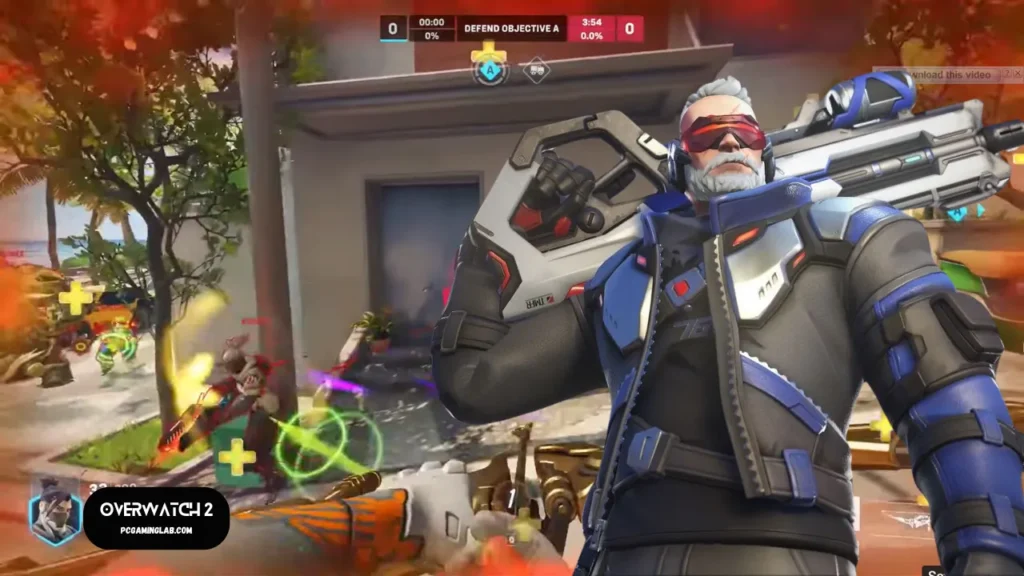
Elimination:
Description: Players compete in small teams, with each player having one life per round. The last team standing wins.
Key Features:
- Single Life per Round: Each player only gets one life per round, adding a layer of strategy and caution to gameplay.
- Team Composition: Team coordination and hero selection are crucial, as the loss of a teammate can significantly impact the team’s chances of winning the round.
- Rounds and Matches: The mode typically consists of multiple rounds, and teams must win a majority of these rounds to win the match.
- Objective: Eliminate all members of the opposing team to win the round.
Maps:
Elimination mode is played on smaller, confined maps designed for quick and intense skirmishes. These maps are tailored to ensure constant engagement and fast-paced action, making every decision and movement critical. Examples of maps used for Elimination mode include:
- Necropolis: A night-time map with multiple levels and confined spaces.
- Black Forest: A dense, wooded area with a mix of open spaces and tight corridors.
- Ecopoint: Antarctica: A cold, icy environment with limited visibility and various elevation changes.
- Castillo: A map with narrow alleys and tight corners, set in a picturesque Mexican town.
Strategies:
- Teamwork and Communication: Effective communication and coordination are vital. Teams must work together to focus fire on key targets and support each other.
- Hero Selection: Choosing the right heroes to complement each other’s abilities can give a team a significant advantage. Balancing offense, defense, and support roles is key.
- Map Awareness: Knowing the map’s layout, including chokepoints, cover spots, and health pack locations, can greatly enhance a team’s tactical approach.
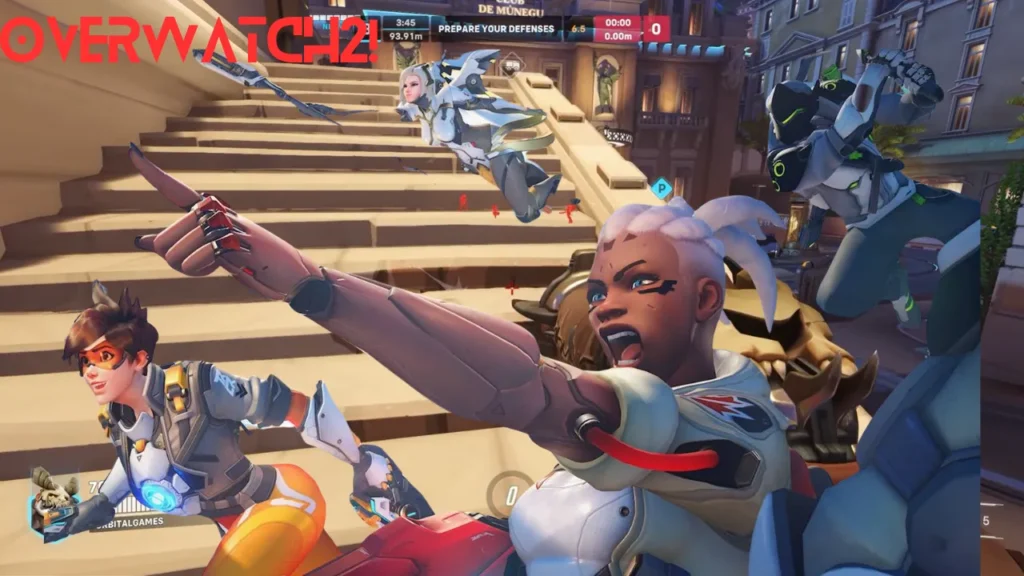
Does Overwatch 2 have a story mode yet?
Overwatch 2 has introduced a PvE (Player vs. Environment) story mode. This mode expands on the lore and narrative of the Overwatch universe, offering players the opportunity to engage in cooperative missions that are rich with storytelling and character development.
Key Features of Overwatch 2’s Story Mode:
- Story Missions: These are narrative-driven missions that progress the overarching story of Overwatch. Players team up to complete objectives, fight AI-controlled enemies, and experience in-depth storylines that explore the backgrounds and motivations of various heroes.
- Hero Missions: Separate from the main story missions, hero missions allow players to engage in repeatable PvE content. These missions are designed to provide additional challenges and help players level up their heroes, unlocking new abilities and customizations.
- Character Development: The story mode delves into the personal stories and relationships of Overwatch’s diverse cast of characters. Players get to see how their favorite heroes interact with each other and develop over time.
- Skill Trees and Customization: In PvE modes, players can level up their heroes and unlock unique abilities through skill trees. This adds a layer of customization and strategy, as players can tailor their heroes’ abilities to suit their playstyle.
- Cooperative Gameplay: Story mode emphasizes cooperative gameplay, where teamwork and coordination are crucial. Players must work together to overcome challenges and achieve mission objectives.
- Cinematic Cutscenes: The story mode includes high-quality cinematic cutscenes that enhance the storytelling experience, bringing the Overwatch universe to life in a visually compelling way.
What is the clash mode in Overwatch 2?
In Overwatch 2, the new Clash mode is a PvP game mode introduced in Season 10. It’s a spiritual successor to the older Assault (2CP) maps, designed to address the balance issues that made those maps unpopular. Clash features five control points in a linear layout, with teams fighting to capture these points in a back-and-forth manner.
The first map for this mode is Hanaoka, inspired by the Hanamura map from Overwatch 1. The objective is to either capture the point closest to the enemy base or outscore the opposing team (Blizzard Watch).
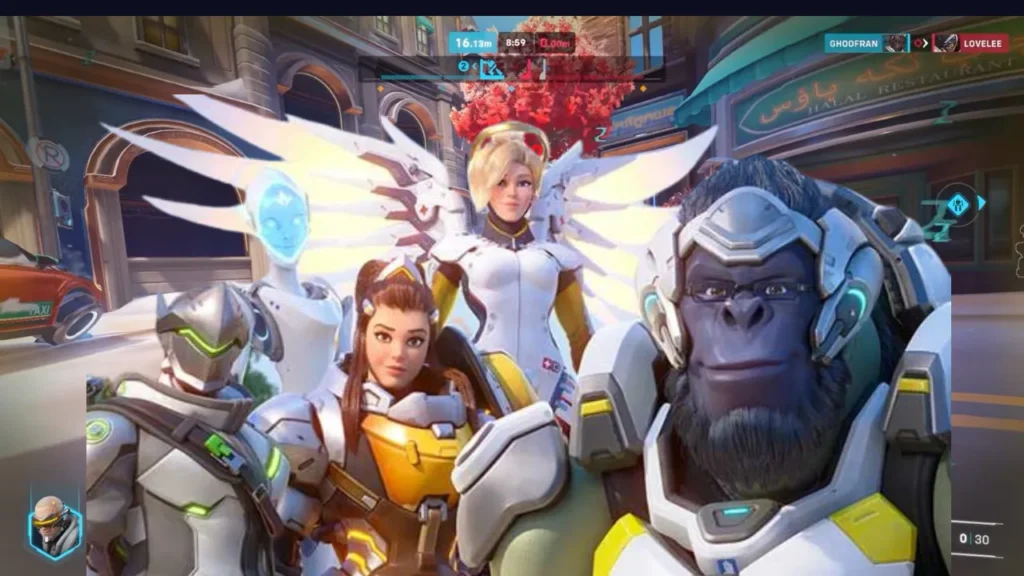
Does Overwatch 2 have events?
Yes, Overwatch 2 features various in-game events. These events are typically seasonal, offering limited-time game modes, special skins, and other cosmetic items. Some of the recurring events include:
- Halloween Terror: Featuring spooky skins and a special PvE mode called Junkenstein’s Revenge.
- Winter Wonderland: Offering festive skins, winter-themed maps, and game modes like Yeti Hunter and Mei’s Snowball Offensive.
- Lunar New Year: Celebrating the Lunar New Year with themed skins, Capture the Flag modes, and festive decorations.
- Anniversary Event: Celebrating the game’s release anniversary with the return of previous event skins and game modes.
These events keep the game dynamic and engaging by introducing new content and challenges for players to enjoy.
Is OW2 story mode worth it?
Yes, the story mode in Overwatch 2 is worth it. It offers an immersive experience that dives deep into the lore of the Overwatch universe. With engaging narrative-driven missions, cinematic cutscenes, and cooperative gameplay, it adds a rich, story-driven dimension to the game.
Players can explore character backstories, enhance their heroes through skill trees, and enjoy a variety of missions that add depth and variety to the gameplay. Overall, it’s a great addition for fans of the franchise and those interested in its lore.
Overwatch 2 offers a variety of engaging game modes catering to different playstyles and preferences. These include traditional PvP modes like Elimination and Clash, which focus on strategic team battles and control point gameplay. The introduction of a PvE Story Mode adds depth by expanding the game’s lore through narrative-driven missions and cooperative play. Seasonal events further enrich the experience by offering unique game modes, special skins, and limited-time content, keeping the gameplay fresh and exciting. Overall, the diverse modes in Overwatch 2 provide a comprehensive and enjoyable experience for both new and veteran players.


Leave a Reply